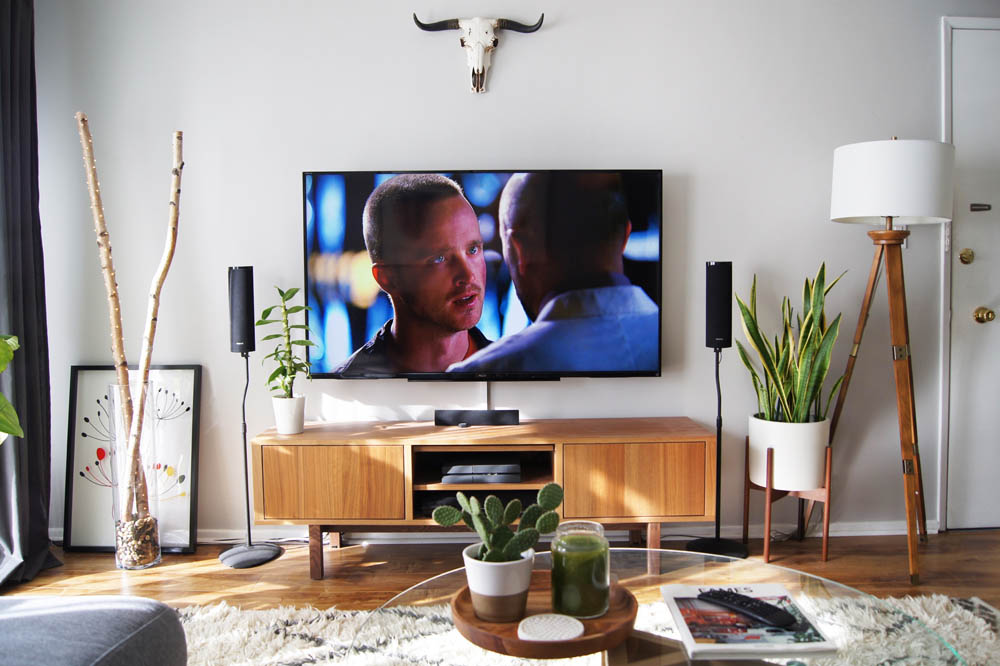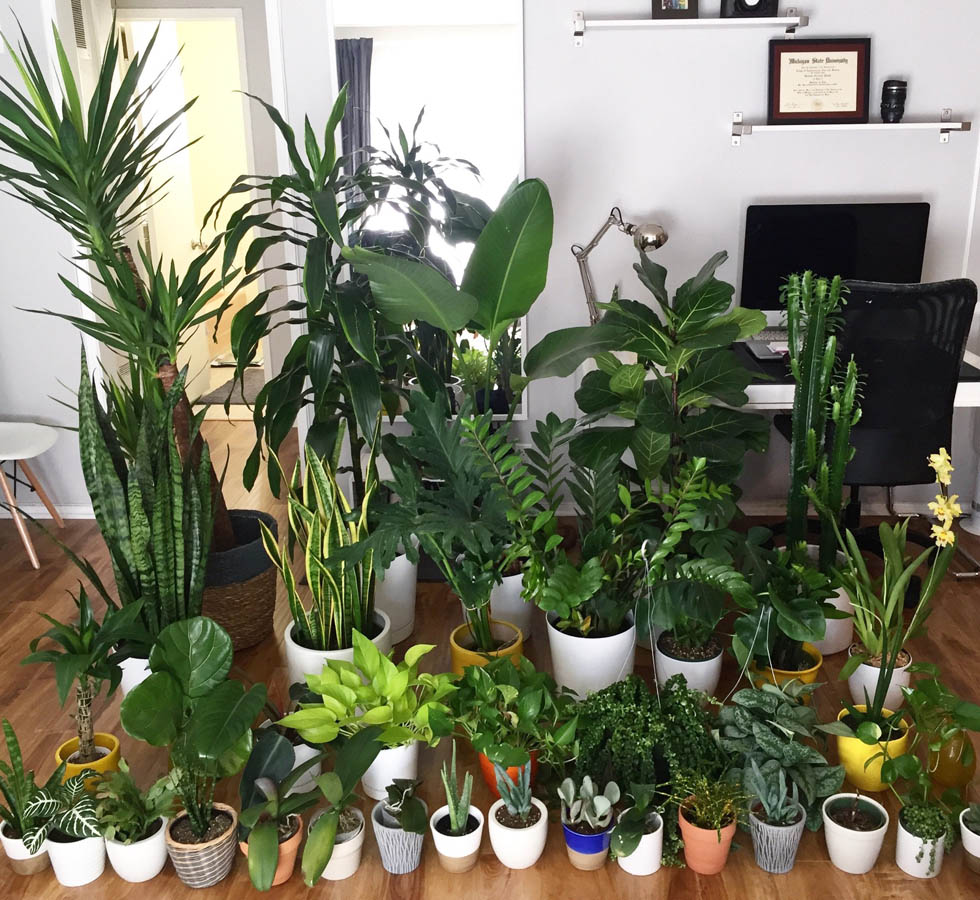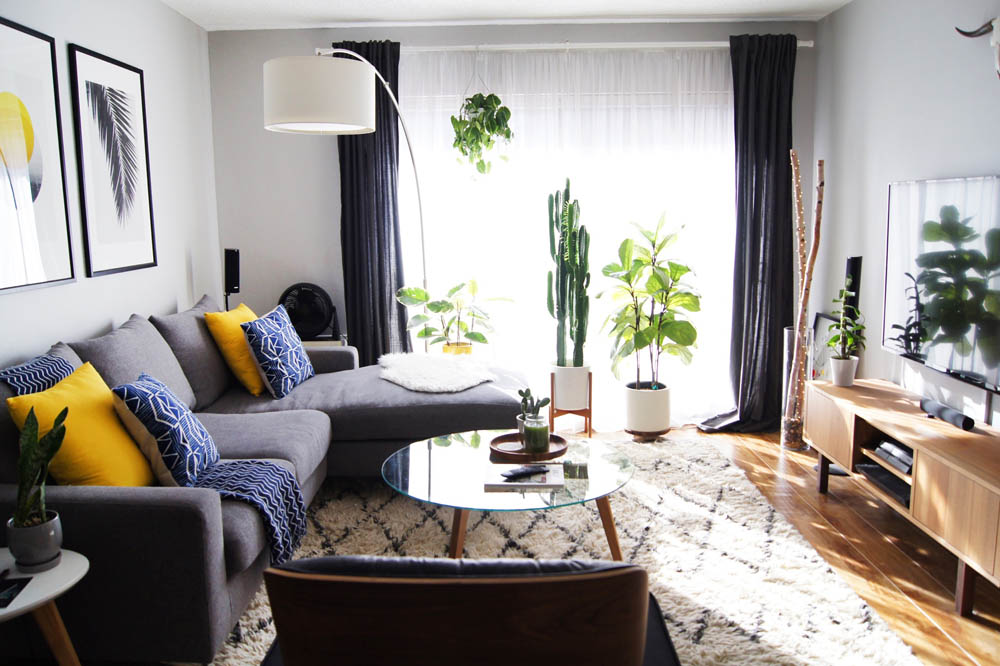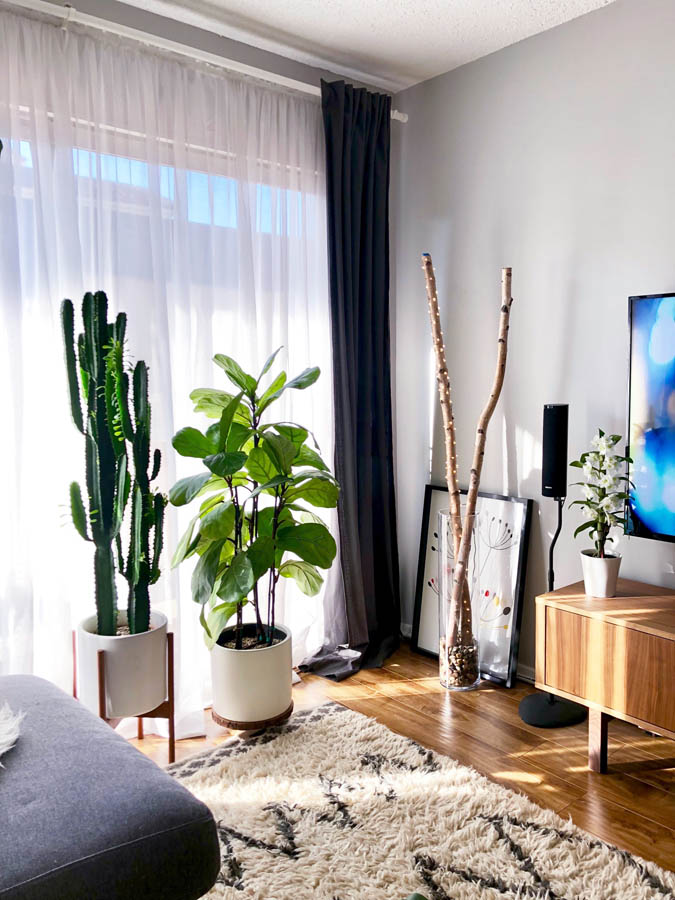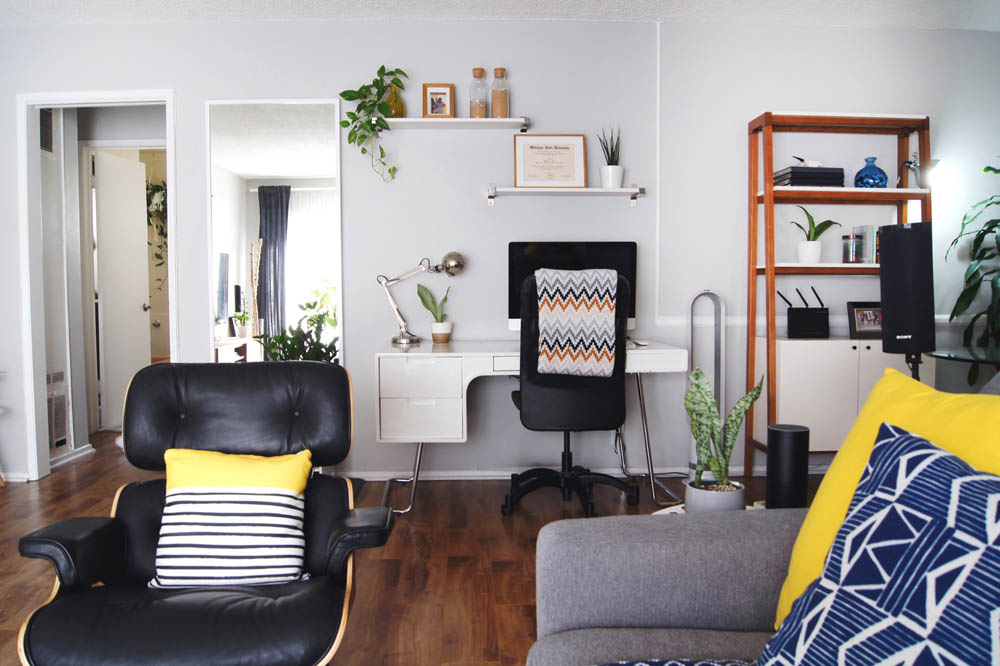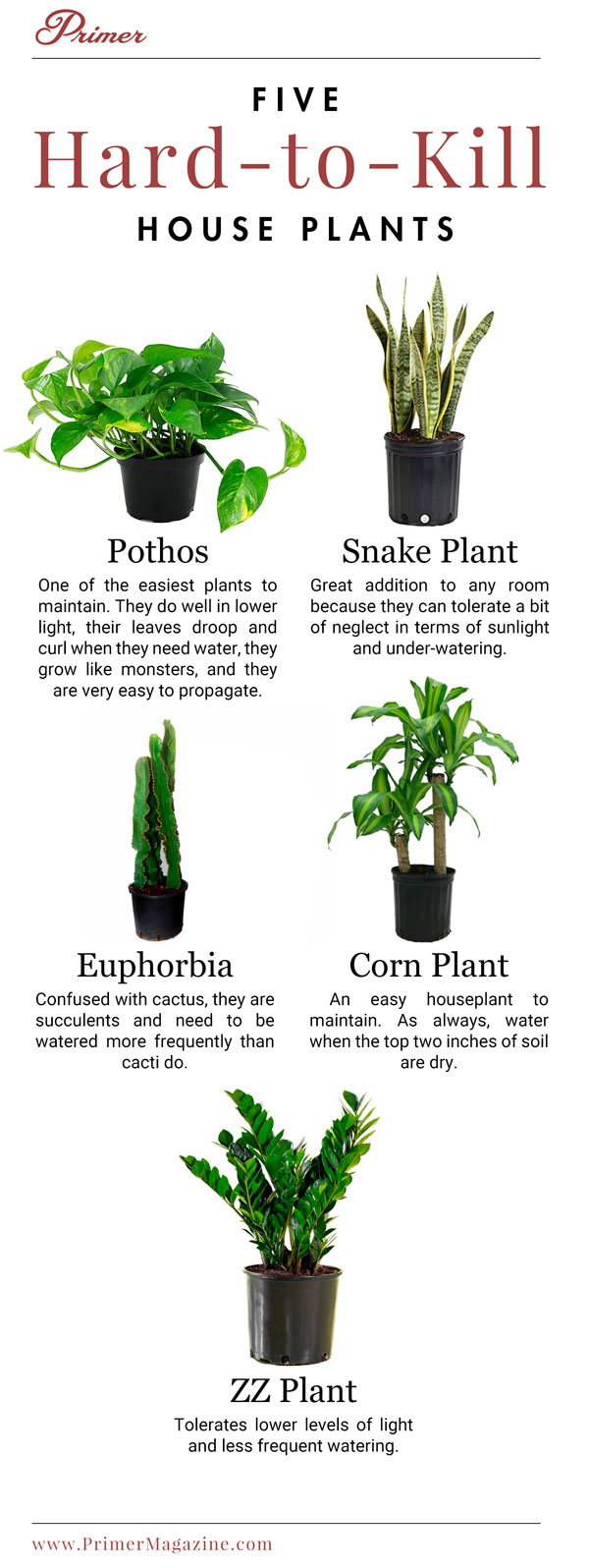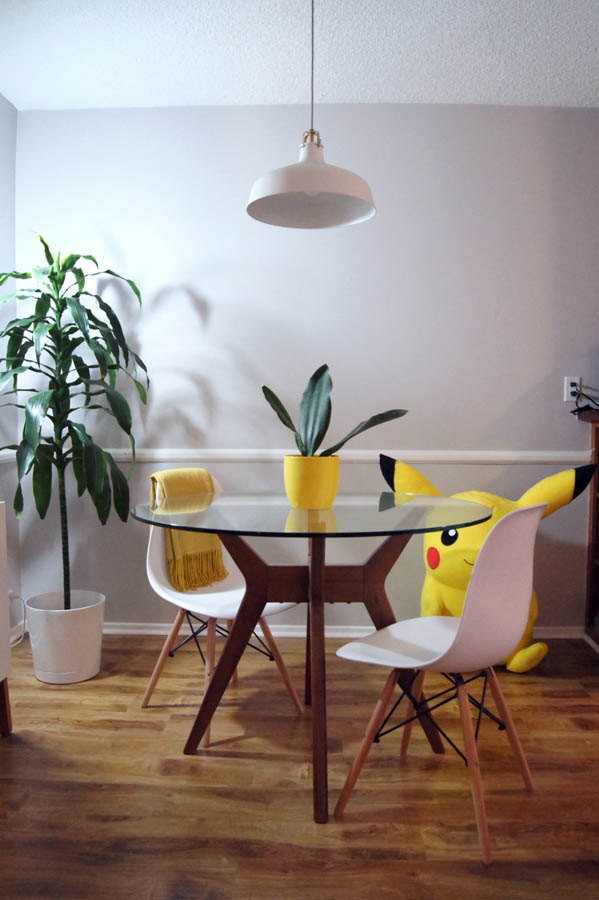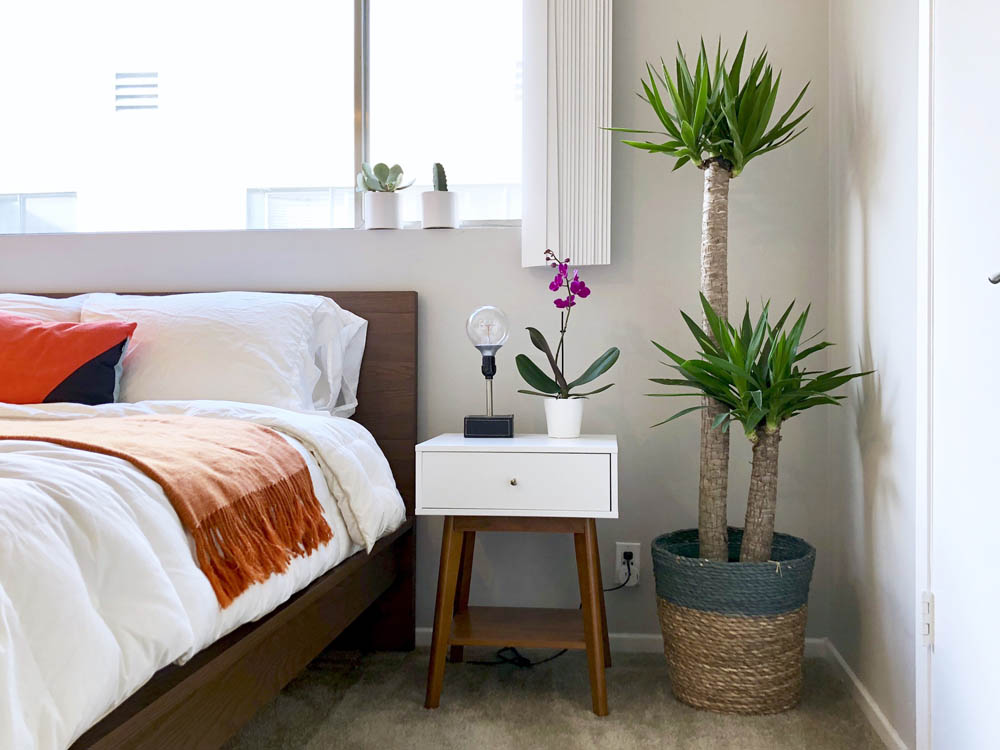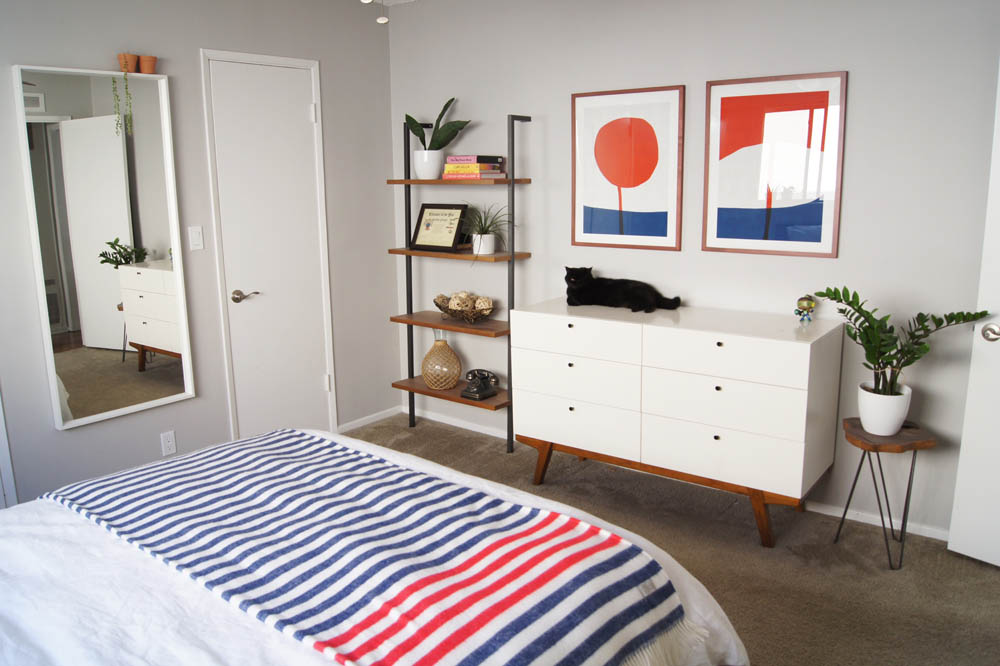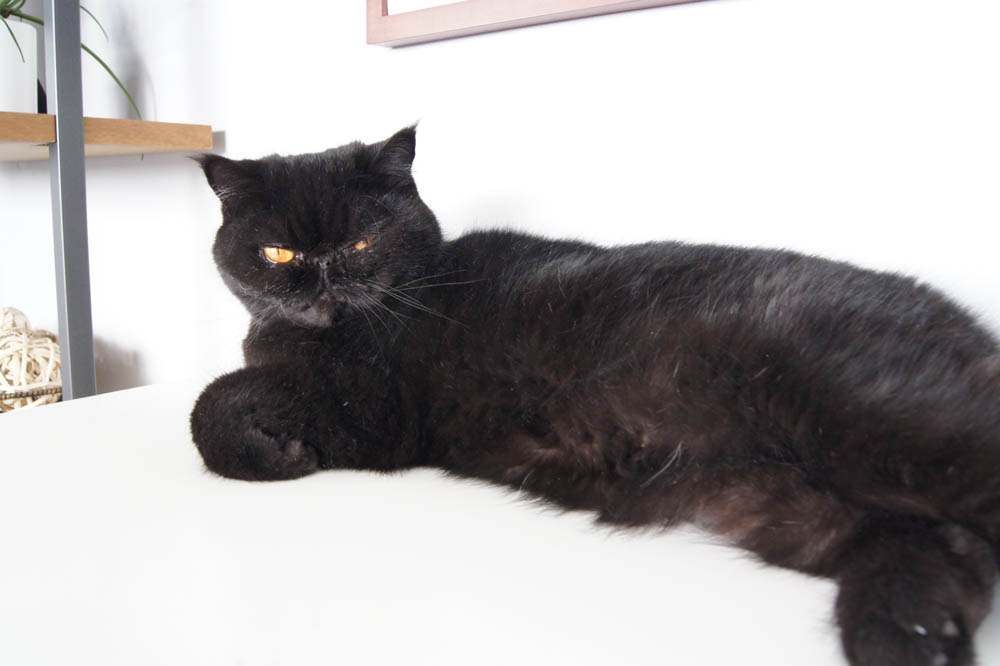Plants bring your home to life – here's how to, you know, not kill them.
Plants are a great addition to any home because they add warmth, texture, and color to every space. They don't clash with furniture, design, or room aesthetics; they complement them. Plants help break up the monotony of the many rectangular-shaped items we place in our homes (TV's, stands, sofas, rugs, coffee tables, and picture frames all tend to be big blocky rectangles that plants can help soften).
Plants can also be found cheap and they're easy to maintain once you know what you're doing.
Words & Photos by Brandon Peeples
Republished with permission
Left to right: orchid, bunny ear cactus, snake plant.
I have 55 plants, 38 inside (pictured in the photo below) and 17 on my balcony. Most of my plants are lower light plants so I don't have to water them as often. Personally I find plants that need a lot of water exhausting and too time consuming. I wanted to create this guide because I see a lot of people suggesting adding plants to someone's home without knowing the why.
With proper placement, a good watering regimen, and appropriate light anyone can start a small collection.
I placed plants that tolerate lower levels of light closer to the foreground and plants that need a lot of bright light right next to the windows. The windows are south-facing and provide the brightest amount of light for the longest time in the northern hemisphere. If you have south windows, you're already winning.
Left to right: Snake plant, rubber plant, bunny ear cactus, heart-shaped philodendron, fiddle leaf fig.
The bunny ear cactus on the coffee table usually lives in a window sill in the kitchen. Succulents and cacti should generally be placed directly in front of windows. A lot of people place them on coffee/dining tables because they're small, cute, and have fun patterns, but they can quickly etiolate (grow long and skinny) when they don't have enough light. This photo is an example of what looks like a good amount of light to the eye, but is insufficient light for cacti and succulents.
I've placed a small snake plant on the right side of the sofa since that area does not get a lot of light. Snake plants are a great addition to any room because they can tolerate a bit of neglect in terms of sunlight and under-watering. The mistake many people make is over-watering their snake plants.
You should allow the top two or three inches of soil to completely dry out before you water them. They store water in their thick leaves and are capable of going multiple weeks in the summer without water and multiple months in the winter.
Your watering frequency will decrease in cooler months and increase in summer months for all plants.
The 4 Things That Kill Houseplants Most Often:
Too much water, not enough water, not enough light, root rot caused by pots that don’t drain
- Plants should be placed in your apartment based on the light they need, not how they look. Buy them accordingly based on the instructions included at the store.
- All plants need to be placed in pots with drainage holes. If your pot doesn’t have a drainage hole, it needs to stay in the plastic container it came in, and slid into the pot so that water doesn’t accumulate and cause root rot.
- Most plants do not need to be watered more than once per week, many only every 10-14 days, and some less than that. Use the card that came with the plant to look up how much water that type of plant requires.
- Take a photo of the card that comes with the plant so you can refer to what type it is if you need to diagnose poor health. Simply look up “dracaena fragrans brown spots” and you’ll be able to quickly fix the problem.
Left to right: Euphorbia, fiddle leaf fig, orchid in bloom.
Many people mistake euphorbias for cactus. Euphorbias are succulents and need to be watered more frequently than cacti do. They grow extremely fast, so make sure you start out with a smaller sized plant.
To the right of the euphorbia is a fiddle leaf fig, it's a bright light plant that needs a good balance of water. They are notoriously fickle, dropping leaves when they are moved or aren't happy. The top leaves of a fiddle leaf fig will droop when the plant is being under-watered.
Orchids get a bad rep for being hard to take care of. The easiest method of taking care of them is once they're out of bloom, throw them in the bathroom where they'll thrive off the high humidity. I have 10 orchids in my bathroom and most of them re-bloom every year. I don't really do anything special but keep them in the bathroom when they're out of bloom.
I also picked these plants for the space since they aren't too bushy and mostly grow upright instead of outward. You want to make sure the plants you pick out now will fit the space in a year or two based on growth.
Left to right: Pothos, and four different varieties of snake plant.
I know the space looks bright, but I've killed every plant that isn't tolerant of low light on the back wall. I put in a mirror to help reflect light making the room appear bigger and brighter.
Plants need to be placed in your homes based on the level of light they need. Pothos are one of the easiest plants to maintain. They do well in lower light, their leaves droop and curl when they need water, they grow like monsters, and they are very easy to propagate. Simply cut off a section of the vine below a node (the brown bump on the back of the vine) and stick it in water. In a week, you'll start to see roots and you can let it grow in water if you choose. The pothos on the bookshelf is a cutting from a larger one you can see hanging behind the door on the left side of the photo.
Left to right: Corn plant, whale fin snake plant
Corn plants (dracaena fragrans) are another easy houseplant to maintain. Again water when the top two inches of soil are dry. I've chosen to supplement my corn plant with a grow light on an 8 hour timer since it is in the darkest corner of my apartment.
You should water your plants fully until water starts to pour out of the drainage holes in the bottom of the pot. This insures the plant gets watered equally and also helps remove salts and mineral buildup in the soil that can lead to browning/yellowing leaf tips. It's especially common with corn plants. I typically take my plants outside or to the sink to let them be fully drenched with water and then to drain.
All plants should be watered based on their need for water and not based on a schedule. For me that ends up being around every two weeks in the summer, give or take a couple of days.
Watering on a schedule can quickly lead to root rot. If you overwater, water will sit in the soil because the plant isn't able to drink it fast enough and that water will start to slowly rot the roots. Think about what it would feel like to walk around in a pair of wet soggy shoes all day after going on a water ride, then as soon as your feet start to dry out and feel better, someone dumps a bucket of water on them.
Once roots start to rot, the plant can no longer take in water through those roots which mimics the signs that the plant needs more water. Repeating the vicious cycle over again. If you experience root rot, you should immediately repot your plant in dry soil.
Left to right: Succulent, Euphorbia, orchid, yucca plant
Yucca plants tend to grow fast, they need a lot of bright light, and a fair bit of water. I prune off old leaves on my yucca plant to keep the shape maintained because they can quickly grow hundreds of new leaves.
You'll know your yucca plant is healthy if the leaves are pointing up and not flopping over and drooping down. Droopy yuccas almost always need more lights. I have another plant lamp on a timer above it since this is a north window that provides weak light during the summer and winter months.
Again I chose a more vertical growing plant for the limited space in the corner.
When you buy plants, lots of times they will have labels indicating whether they need direct or indirect light. Indirect light is light filtered through a window, curtains, shades, etc. Direct light refers to light from the sun that isn't bounced or filtered by an object. Plants that are outside and unobstructed from the sun receive direct light. Direct light will burn most houseplants.
Brandon's favorite places to buy plants in Los Angeles
- Rolling Greens nursery in Culver City (biggest and best selection of plants in LA)
- Mickey Hargitay Plants in West Hollywood (the owner is really nice and his sister is Mariska, the star of Law & Order: SVU)
- Sunset Nursery in Hollywood
- Plant Provocateur in Silver Lake
- The Home Depot in Marina Del Ray has the best selection of plants out of the home improvement stores
Left to right: String of pearls (on the mirror), snake plant, pink quill plant, zz plant.
ZZ plants are another easy-to-care-for houseplant as they tolerate lower levels of light and less frequent watering. You can pretty much consider them equals to snake plants. I have three ZZ plants and ten different kinds of snake plants because I can just set them down and forget them. Common plants like peace lilies, anthuriums, and dumb canes need a lot of water and I'm not about that life.
Left to right: Cat
Cats need to be watered and fed every day. There are some that are absolute pests and will sit, eat, sleep, and play in your plants. This one knows better.
Hope this helps someone! Happy planting!
Read next: Recreate This Room: This Primer Reader’s Drool-Worthy Living Room is Inspiring and Shoppable



